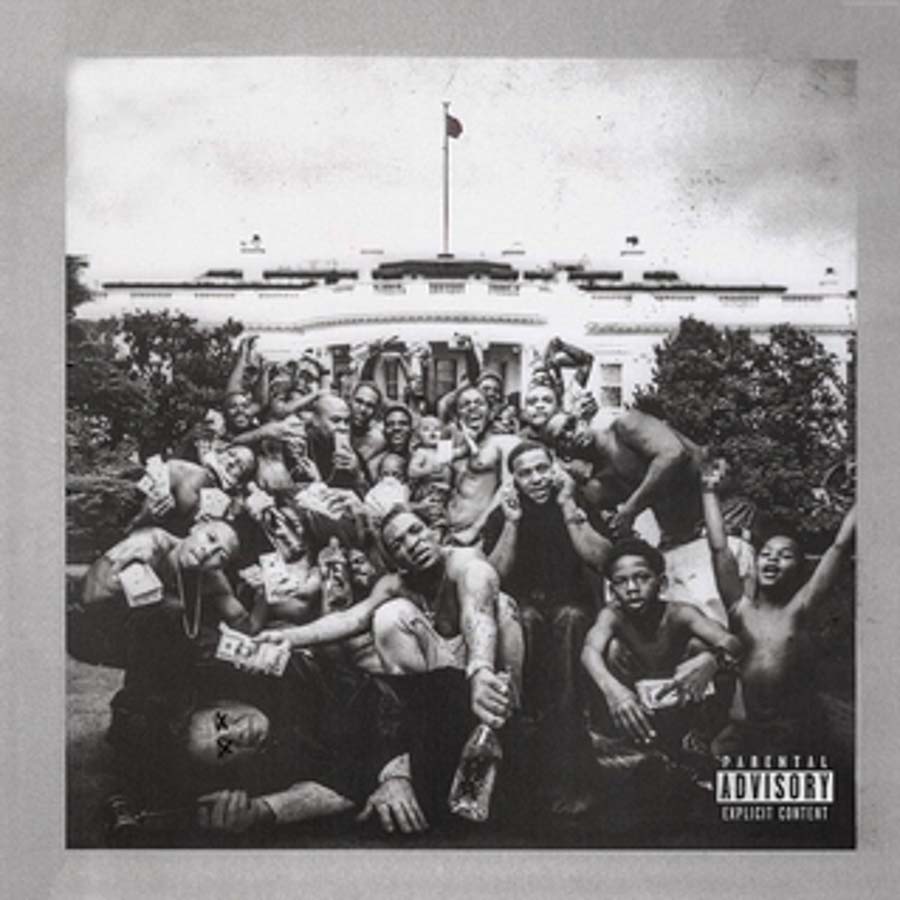Crackling white noise. Tinny, jazzy, elevator ambience. These are the first sounds you hear. A voice grows louder, clearer, until the croon becomes understandable: “Every n***** is a star.” The phrase is as telling as it is provocative. Black pride is a pervasive theme in Lamar’s discography, and he continues the trend with aplomb in his latest album, To Pimp A Butterfly.
Kendrick Lamar holds the torch as hip hop’s latest prophet – and, at this rate, the torch will only pass when his hands are cold. To Pimp A Butterfly was released on March 16 to overwhelmingly positive reviews from fans. As usual, his lyricism is poetic and powerful, made even more effective by the versatility of his voice.
The opening track contains strong jazz and funk influences, setting the tone for the entire album. “Wesley’s Theory” is an appropriate sample of Lamar’s typical artistry, with tight production, politically charged lyrics, and clever literary devices. A track feature from George Clinton references the album title’s metaphor: “When the four corners of this cocoon collide/You’ll slip through the cracks hoping that you’ll survive […] Are you really who they idolize?/To pimp a butterfly.”
Lamar raps the first verse from the perspective of an artist yet to be make it big (“When I get signed…”), fantasizing about the material wealth success will provide (“Platinum on everything…”). The second verse is from the perspective of ‘Uncle Sam,’ who lures Lamar with riches but betrays him in the end: “Get it all, you deserve it Kendrick/And when you hit the White House, do you/But remember, you ain’t pass economics in school/And everything you buy, taxes will deny/I’ll Wesley Snipe your ass before 35.” The first verse is the voice of the aspiring ‘butterfly,’ who is then ‘pimped’ and exploited by the second verse’s ‘America.’ It’s fitting that To Pimp A Butterfly is also a play on the American literary classic To Kill A Mockingbird – a novel celebrated for its racial commentary despite ultimately perpetuating the trope of the white saviour.
“Wesley’s Theory” is an appropriate sample of Lamar’s typical artistry, with tight production, politically charged lyrics, and clever literary devices.
Lamar goes on to address systemic racial injustice, particularly in the album’s second single, “The Blacker The Berry.” He began writing the track after watching news coverage of Trayvon Martin’s murder, and his anger surrounding the situation translates onto the track – Lamar delivers abrasive lyrics (“I’m Black as the heart of a fucking Aryan”) in strained tones.
But the album is not all about anger: Lamar also highlights the importance of Black pride. “i,” the lead single off of To Pimp A Butterfly, stands out as an upbeat song that celebrates self-love. The album edition contains an extended ending, in which Lamar explains his belief in the n-word. He reclaims the historical slur by linking it to the word negus, which means “Black emperor.”
From the brazen, unapologetically rapid flow in “The Blacker The Berry” to the smooth and sensual delivery in “These Walls,” Lamar disproves the pejorative claim that hip hop lacks musicality. Throughout the album, Lamar uses his voice to maintain the driving rhythms. At times, his low-pitched rapping acts as a bassline of sorts, utilizing lighter percussion effects to complement rather than support his flow. Though different in style from his previous album good kid, m.A.A.d city, this most recent effort is equally impressive.
2015 is too young for any ironclad proclamations that To Pimp A Butterfly is the album of the year, but it has undoubtedly set the bar high. Lamar’s newest work is yet another shining example of his explosive talent.
